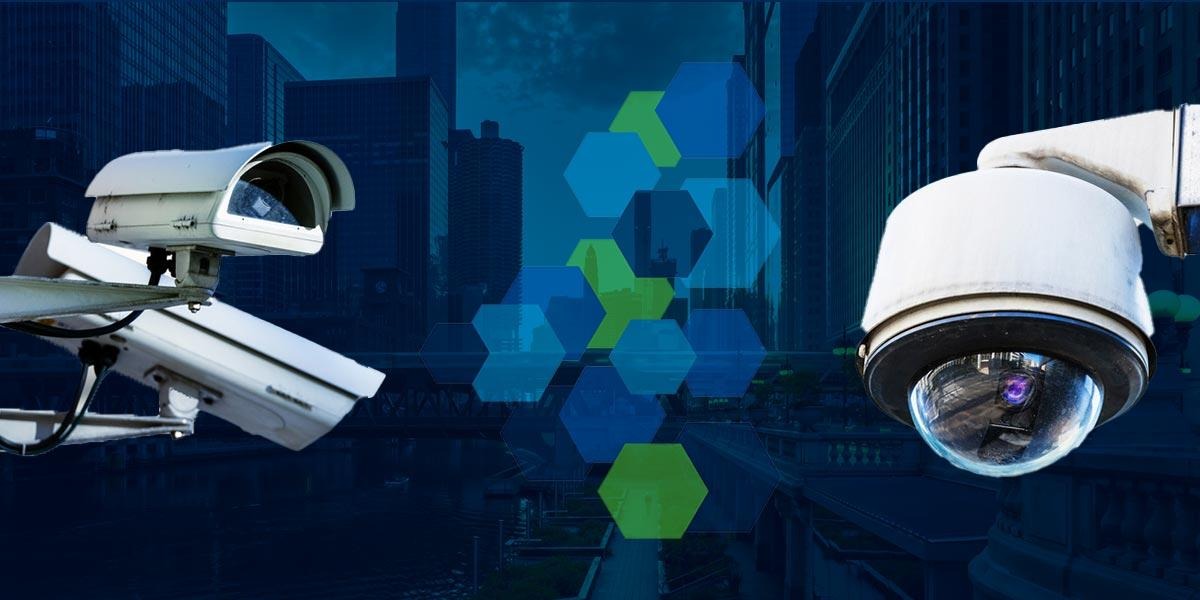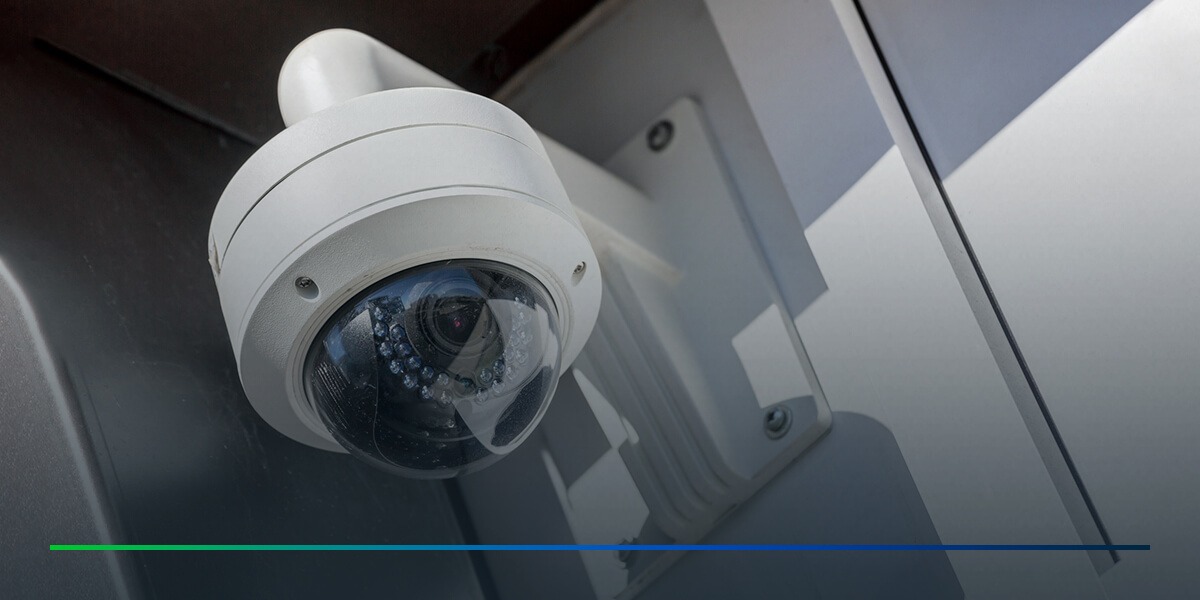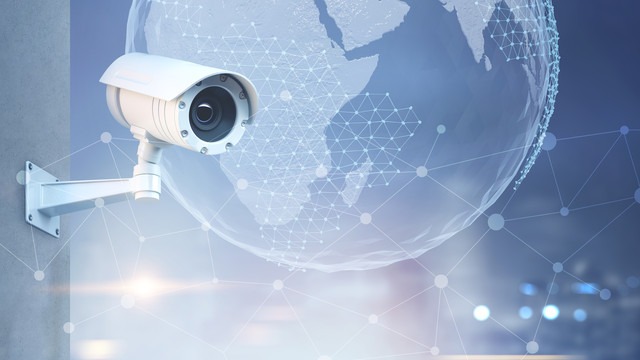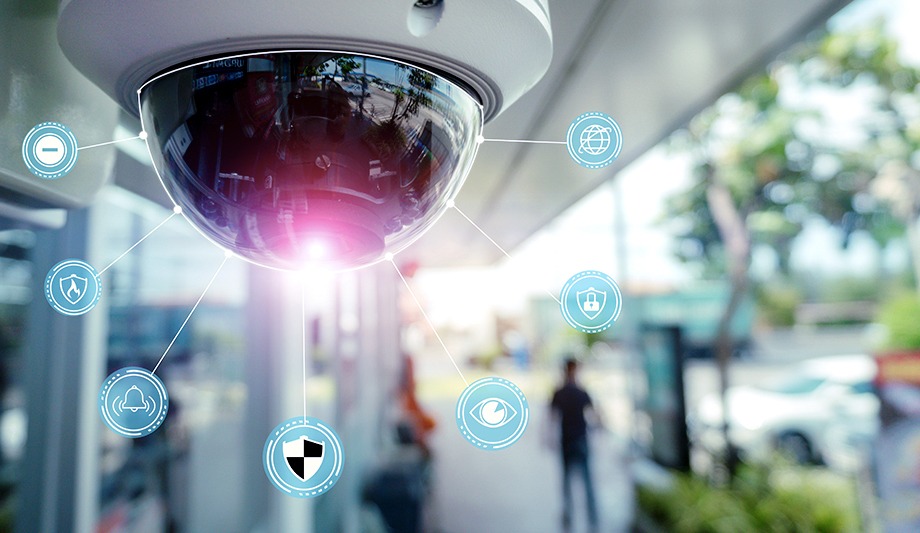Closed-Circuit Television (CCTV) and video surveillance have become indispensable tools for modern security and monitoring. Although the two terms are often used interchangeably, they represent different approaches and technologies in the field of visual monitoring. In this article, we will explore the evolution, definitions, and fundamental differences between CCTV and video surveillance. We will discuss how each system is designed, what components are involved, and how they are applied in various sectors—from small businesses to large-scale smart cities.
CCTV traditionally refers to systems where video signals are transmitted over a closed network and monitored on dedicated screens. In contrast, video surveillance is a broader term that encompasses not only closed-circuit setups but also modern digital technologies, such as IP cameras, wireless networks, and cloud storage solutions. While both systems are aimed at enhancing security, CCTV is often associated with fixed installations in defined areas, whereas video surveillance offers greater flexibility and scope, including remote monitoring and real-time analytics. This comprehensive guide will examine each system’s technology, benefits, and potential future innovations, helping readers choose the right solution for their specific needs.
Types of CCTV and Video Surveillance Systems
Understanding the variety of systems available is essential for choosing the most appropriate technology. The industry has evolved from the early analog CCTV setups to more sophisticated digital surveillance systems that integrate seamlessly with modern networks. In this section, we detail the various types of systems, their components, and the technologies behind them.
A. Traditional Analog CCTV Systems
Analog CCTV systems are the backbone of early security technology. They typically involve cameras that transmit video signals via coaxial cables to Digital Video Recorders (DVRs). These systems are known for their reliability in controlled environments. The cameras are usually fixed or dome types, providing a continuous, uncompressed video stream that is recorded on-site. Despite their proven track record, analog systems are often limited by resolution, installation challenges, and the inability to integrate advanced analytics.
B. Digital and Hybrid Systems
The advent of digital technology gave rise to IP (Internet Protocol) cameras and Network Video Recorders (NVRs), forming the core of modern video surveillance. Digital systems offer high-definition video capture, easier integration with software analytics, and remote monitoring capabilities. Hybrid systems, on the other hand, combine the strengths of both analog and digital setups. They allow existing analog infrastructure to be integrated with new digital cameras, offering a cost-effective upgrade path while still providing enhanced functionality.
C. Wireless and Mobile Surveillance
Advancements in wireless technology have enabled the development of surveillance systems that are free from the constraints of physical cabling. Wireless cameras can transmit data over Wi-Fi, 4G, or other network protocols, making them particularly useful for locations where cabling is impractical. Mobile surveillance extends these capabilities further by allowing live feeds and recorded footage to be accessed from smartphones and tablets. This flexibility is especially beneficial in dynamic environments, such as construction sites or public events.
D. Specialized Surveillance Technologies
Beyond the standard systems, there are specialized types that cater to unique applications:
Aerial Surveillance: Utilizes drones, helicopters, or fixed-wing aircraft to cover large areas. It is increasingly used for traffic monitoring, border security, and environmental studies.
PTZ (Pan-Tilt-Zoom) Cameras: These cameras offer dynamic control over the viewing angle, allowing operators to zoom in on areas of interest. They are essential in monitoring large or high-risk areas.
Body-Worn Cameras: Increasingly adopted by law enforcement and private security, these devices offer mobility and can capture events from a first-person perspective.
Low Light and Night Vision Technologies: Equipped with infrared (IR) illumination, these cameras ensure effective monitoring even under low-light conditions.
The wide array of options—from analog and digital to wireless and specialized technologies—demonstrates that surveillance systems can be tailored to meet a variety of security challenges. Each system has unique strengths and limitations, and the choice will depend on the specific requirements of the application.
Features and Capabilities of CCTV and Video Surveillance
Modern security solutions go far beyond simple video capture. Both CCTV and video surveillance systems come with a range of features and functionalities designed to enhance security, facilitate quick responses, and improve overall operational efficiency. This section explores the key features that differentiate these systems and how they contribute to robust security management.
A. Core Features of CCTV Systems
CCTV systems are primarily known for their robust and straightforward functionality. Some of the most significant features include:
Live Viewing: Operators can monitor real-time footage on dedicated screens. This is essential for immediate response in critical environments such as banks, stores, or government facilities.
Continuous Recording: Most CCTV setups use DVRs to continuously record video, ensuring that all events are documented. This recorded footage is vital for later investigations and evidence gathering.

Playback and Archiving: Recorded footage can be reviewed to analyze incidents, trace movements, and verify events. Traditional systems store data locally, which offers fast retrieval but may limit storage capacity.
Motion Detection: Many systems incorporate motion sensors that trigger recording only when activity is detected, reducing the volume of unnecessary footage.
Physical Security: The wired nature of CCTV systems often makes them less susceptible to hacking. Their closed-circuit design ensures that the data remains within a controlled network.
B. Advanced Capabilities in Video Surveillance
Video surveillance systems build upon the foundation laid by CCTV by incorporating digital innovations. Key enhancements include:
Wireless Transmission: With the elimination of cumbersome cables, cameras can now transmit data wirelessly. This facilitates faster installation and offers greater flexibility in camera placement.
High-Resolution Imaging: Modern surveillance cameras capture high-definition (HD) or even 4K video. The clarity and detail in these images are crucial for identifying subjects and analyzing events.
Cloud Storage and Remote Management: Video surveillance systems often leverage cloud-based storage, allowing for remote access and management of footage. This ensures that data is securely stored off-site and can be accessed from anywhere.
Artificial Intelligence and Analytics: Advanced video surveillance systems use AI algorithms to analyze footage in real time. This includes smart motion detection that minimizes false alarms, facial recognition, license plate recognition (ANPR), and other forms of object tracking.
Interoperability with Other Systems: Modern systems integrate seamlessly with other security measures, such as access control, alarm systems, and IoT devices. This interoperability creates a more comprehensive security solution.
Mobile Viewing: The ability to stream live video to mobile devices means that operators and security personnel can monitor incidents on the go, ensuring timely responses regardless of their location.
By comparing these features, it becomes evident that while traditional CCTV systems offer reliable, straightforward security, video surveillance solutions provide expanded functionality and scalability for modern requirements. This section underscores the importance of selecting the right system based on the desired balance between simplicity, advanced analytics, and flexibility.
Benefits and Applications of CCTV and Video Surveillance
Security systems are deployed not just to record footage but to actively deter crime, monitor behavior, and protect valuable assets. In this section, we detail the benefits of both CCTV and video surveillance, while also outlining the diverse application areas where they make a significant impact.
A. Benefits of CCTV Systems
Traditional CCTV systems have been a cornerstone in security due to several key benefits:
Crime Deterrence: The visible presence of cameras acts as a deterrent to criminal activities. Potential offenders are less likely to commit crimes when they know their actions are being recorded.
Evidence Collection: CCTV footage is often used in legal proceedings. Recorded video provides tangible evidence that can support investigations and court cases.

Cost-Effective Security: Although the installation process may be more complex due to the need for cabling, the overall cost of hardware for analog CCTV systems is often lower compared to newer digital systems.
Reliability in Controlled Environments: In environments where physical infrastructure is already in place, CCTV offers robust performance with minimal risk of wireless interference.
Enhanced Access Control: CCTV systems help monitor entry and exit points, ensuring that only authorized personnel have access to sensitive areas.
B. Advantages of Video Surveillance Systems
Modern video surveillance extends these benefits with several additional advantages:
Flexibility and Scalability: Wireless cameras and cloud-based storage mean that video surveillance systems can be easily expanded to cover larger areas without the constraints of physical wiring.
Improved Image Quality: With the advent of high-definition and 4K cameras, video surveillance provides clear, detailed imagery that is essential for accurate identification and analysis.
Smart Analytics: The integration of AI allows for smart motion detection, facial recognition, and other analytical features that reduce false alarms and enable proactive security measures.
Remote Accessibility: Cloud integration and mobile viewing mean that footage can be accessed remotely, providing real-time monitoring and quicker responses to incidents.
Broader Application Scope: Video surveillance is not limited to indoor or fixed installations. It is also used for traffic monitoring, public safety, industrial automation, and environmental observation.
C. Application Areas
Both CCTV and video surveillance find applications in numerous sectors:
Retail and Commercial Spaces: In stores and malls, these systems help deter theft, monitor customer behavior, and protect assets.
Banking and Finance: Banks use surveillance to secure cash handling areas and monitor entry points, significantly reducing the risk of robbery.
Industrial Facilities and Warehouses: Surveillance systems monitor production lines and inventory, helping to identify inefficiencies and prevent loss.
Transportation and Public Infrastructure: City centers, highways, and public transport systems use video surveillance for traffic monitoring and crowd control.
Government and Educational Institutions: Security in government buildings, schools, and universities is enhanced through constant surveillance, ensuring a safe environment.
Healthcare: Hospitals and clinics employ surveillance to protect patients and manage access to sensitive areas.
Smart Cities: Integration with other IoT systems allows for comprehensive urban management, including monitoring public spaces and critical infrastructure.
By aligning the strengths of each system with the requirements of the application, organizations can design security solutions that not only prevent crime but also enhance operational efficiency and safety.
Comparison Between CCTV and Video Surveillance
When choosing a security system, understanding the nuanced differences between CCTV and video surveillance is crucial. In this section, we provide a detailed comparison of the two technologies based on various factors, including functionality, cost, ease of installation, and scalability.
A. Transmission Methods
CCTV: Traditionally uses closed-circuit transmission. Video signals are sent via coaxial cables directly to monitors and recorders, making it difficult for unauthorized access or interference.
Video Surveillance: Utilizes both wired and wireless transmission. With IP cameras and wireless networks, video surveillance systems offer greater flexibility. The use of wireless protocols and internet connectivity enables remote access and integration with other digital systems.

B. System Components
CCTV Systems: Comprise cameras, cables, monitors, and DVRs. The closed nature of these systems means that all components are tightly integrated and optimized for a single environment.
Video Surveillance Systems: Include advanced components such as IP cameras, cloud-based storage, motion sensors, and smart analytics software. These systems are designed to work in tandem with other digital infrastructure, offering a higher level of integration and flexibility.
C. Installation and Maintenance
CCTV: Installation often requires running extensive cabling, which can be both time-consuming and costly. However, once installed, these systems are known for their robustness and low susceptibility to hacking.
Video Surveillance: Installation is generally more straightforward because of the wireless options available. Maintenance can be simplified through remote diagnostics and cloud management, although reliance on network connectivity may introduce new challenges.
D. Image Quality and Analytics
CCTV: Earlier systems are based on analog technology, which traditionally limited image resolution. While modern upgrades have introduced digital recording, many legacy systems may still lack the clarity provided by newer solutions.
Video Surveillance: Offers superior image quality with HD and 4K capabilities. Additionally, the integration of AI-based analytics means that video surveillance systems can perform real-time analysis, object detection, and event prediction—features that are not available in traditional CCTV setups.
E. Costs and Scalability
CCTV: Generally features lower hardware costs. However, the expense associated with cabling, installation, and physical maintenance can add up, particularly when scaling up.
Video Surveillance: Although individual cameras might be more expensive, the overall system benefits from lower installation costs (due to wireless setups) and the scalability provided by cloud storage and remote management capabilities.
F. Security and Data Management
CCTV: The closed nature of these systems provides inherent security benefits, making them less vulnerable to cyberattacks. Data is typically stored locally, which limits remote tampering.
Video Surveillance: While offering advanced features, these systems require robust cybersecurity measures to protect against unauthorized access, especially when using wireless and cloud-based solutions.
This detailed comparison highlights that while CCTV remains a trusted and robust solution for fixed, indoor environments, video surveillance brings enhanced functionality, flexibility, and scalability suited for dynamic and expansive applications. The decision between the two will ultimately depend on the specific security needs, budget constraints, and infrastructure of the organization.
Future Innovations and Trends in Video Surveillance
The field of video surveillance is continuously evolving. Technological advancements are not only enhancing image quality and analytical capabilities but also paving the way for entirely new applications and integration with other systems. In this section, we explore the future trends and innovations that are set to shape the next generation of surveillance solutions.
A. Higher Resolution and Enhanced Imaging
One of the most notable trends is the widespread adoption of high-resolution imaging. Cameras that support 1080p and 4K resolutions are becoming standard, offering unparalleled clarity and detail. This improvement is crucial for identifying individuals, reading license plates, and analyzing subtle movements in crowded environments. As sensor technology improves, we can expect even higher resolutions and better performance in low-light conditions.

B. Integration of Artificial Intelligence
Artificial Intelligence (AI) is revolutionizing how surveillance systems operate. With smart analytics, AI can process vast amounts of video data in real time, enabling features such as:
Facial Recognition: Quickly identifying known individuals or tracking persons of interest.
Behavioral Analysis: Detecting unusual activities that might indicate a security threat.
Predictive Analytics: Forecasting potential incidents based on historical data and real-time observations.
These capabilities allow for proactive security measures, reducing response times and minimizing risks. The integration of AI also leads to better management of false alarms and improved resource allocation for security personnel.
C. Cloud Storage and Edge Computing
Cloud-based storage solutions are rapidly replacing traditional on-site storage methods. The benefits of cloud storage include scalability, remote accessibility, and improved data redundancy. Coupled with edge computing, surveillance systems can process data locally to reduce latency, while still leveraging the cloud for long-term storage and advanced analytics. This hybrid approach enhances both performance and security.
D. Expansion of IoT and Smart City Applications
Video surveillance is becoming an integral part of the broader Internet of Things (IoT) ecosystem. In smart cities, surveillance cameras are being used alongside sensors that monitor environmental conditions, traffic flow, and public safety. The integration of these systems creates a comprehensive network that can be managed centrally, allowing city administrators to respond swiftly to emergencies and optimize urban operations.
E. Drone and Aerial Surveillance
Drones are increasingly being deployed for aerial surveillance, offering an unprecedented perspective for monitoring large or hard-to-reach areas. These unmanned aerial vehicles (UAVs) can be equipped with high-definition cameras and thermal sensors to monitor traffic, manage crowds during events, and even assist in disaster response. As regulatory frameworks adapt, the use of drones in surveillance is expected to become more widespread.
F. Cybersecurity Enhancements
As video surveillance systems become more interconnected, cybersecurity will be a critical focus. Manufacturers and service providers are continuously developing advanced encryption methods and secure communication protocols to protect surveillance data from cyberattacks. Ensuring the integrity and confidentiality of video feeds will remain a top priority, especially as remote monitoring and cloud integration become more prevalent.
G. User-Centric Innovations
Finally, future surveillance systems are set to become more user-centric, with interfaces and applications designed for ease of use. Mobile apps that offer real-time alerts, remote control of cameras, and seamless integration with other smart devices are just the beginning. The future holds the promise of highly intuitive systems that require minimal technical expertise to operate, thereby broadening the accessibility of advanced surveillance technology.
These innovations indicate that video surveillance is not just about recording events—it is rapidly transforming into an intelligent, interconnected network that can predict, analyze, and respond to security challenges in real time. The evolution of these systems is likely to create safer environments in public spaces, businesses, and critical infrastructure alike.
In conclusion, both CCTV and video surveillance systems play a pivotal role in ensuring safety and security in today’s increasingly complex environments. While CCTV systems have long provided a reliable and proven method for monitoring defined areas, video surveillance represents a significant evolution that incorporates digital advancements, cloud storage, AI, and wireless technology. Each system comes with its own set of advantages and limitations, and the choice between them depends largely on the specific needs, scale, and budget of the user.
To summarize:
CCTV systems excel in environments that require stable, wired connections and have a proven track record in crime deterrence and evidence collection. Their robust design and closed-circuit nature make them ideal for small to medium-sized installations, such as banks, retail outlets, and office buildings.
Video surveillance systems bring flexibility, enhanced image quality, and advanced analytics to the table. They are particularly well-suited for larger-scale applications, such as monitoring urban spaces, transportation hubs, and large industrial sites. With features like remote access, cloud storage, and smart motion detection, these systems offer a dynamic approach to modern security challenges.
The future of surveillance is exciting, with rapid advancements in resolution, AI-driven analytics, and integration with IoT technologies paving the way for systems that are more responsive and efficient. As security needs evolve, organizations and municipalities alike must consider both current capabilities and future trends when planning their surveillance infrastructure.
Ultimately, the decision to implement CCTV or video surveillance—or a combination of both—should be guided by a thorough analysis of the specific security requirements, the operational environment, and the desired outcomes. By understanding the strengths and weaknesses of each system, stakeholders can design a tailored solution that not only meets present demands but also adapts to the emerging challenges of tomorrow’s interconnected world.
In our journey through the intricacies of CCTV and video surveillance, we have examined various system types, compared core features, and explored emerging trends that promise to redefine security monitoring. Whether you are a business owner looking to secure your assets, a city planner designing a smart city, or a security professional aiming to upgrade legacy systems, the insights provided here serve as a comprehensive guide for navigating the rapidly evolving landscape of surveillance technology.

